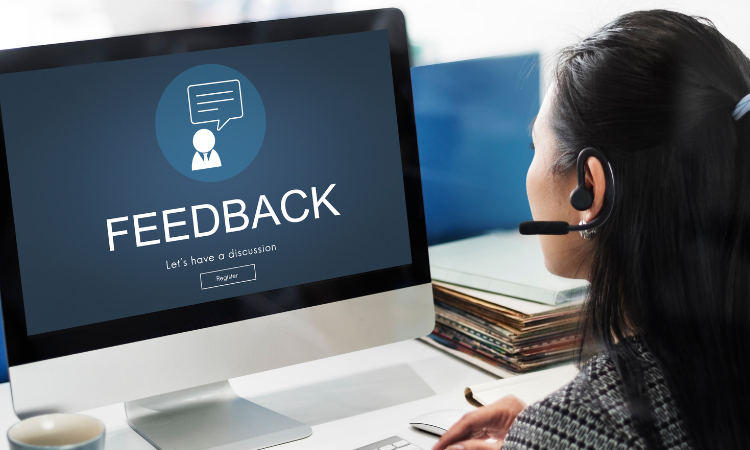Imagine this: You've developed a cutting-edge, sustainable smart packaging product that promises to change the future of logistics. But despite the innovation, your customers face usability challenges, frustration with certain features, and difficulty understanding how the product works.
This is exactly what LivingPackets experienced. As their product moved from internal testing to wider public use, gathering real-time, actionable feedback became critical. However, their existing feedback tool, Paperform, couldn't provide the flexibility, automation, or deep insights needed to address these challenges.
That’s when LivingPackets turned to Zonka Feedback, a more advanced, customizable, and feature-rich alternative. With Zonka Feedback, LivingPackets was able to capture user insights at multiple touchpoints, streamline their feedback collection process, and use that data to improve their product and customer experience. Amal Hamid, Customer Experience Manager at LivingPackets, reflected:
We started sending surveys to users when we noticed they were struggling with the product. Zonka Feedback helped us quickly identify where the process was blocked and improve the user experience.
But how did this transition help them enhance the user experience and solve critical pain points?
Let’s dive into the details of LivingPackets' transformation from Paperform to Zonka Feedback, highlighting how Zonka Feedback became the ideal solution for managing customer feedback and driving product improvement.
Elevate CX with Customer Feedback🔥
Collect real-time, in-moment feedback at all touchpoints in customer journey and leverage feedback insights to transform customer experience.

From Paperform to Zonka Feedback: LivingPackets' Strategic Shift
LivingPackets initially relied on Paperform to gather feedback, but soon found its limitations hindered their growth. They needed more than just basic surveys; they sought a customer feedback tool that could provide actionable data, streamline processes, and integrate seamlessly into their system.
Zonka Feedback offered exactly that.
"We needed a system where feedback flowed directly into our process, making it easy to track and respond to issues quickly. Paperform gave us basic input, but Zonka Feedback provided actionable insights. Plus, Zonka Feedback was so user-friendly—it didn’t require any complex onboarding, making it simple for our team to get started right away." - Amal Hamid, Customer Experience Manager
Major Challenges with Paperform
Paperform is an online survey tool that is praised for its simplicity, making it ideal for smaller businesses looking for basic form creation and data collection. However, for growing organizations with more dynamic feedback needs, Paperform can fall short. Let us look at some major challenges that LivingPackets faced while using Paperform as their feedback collection tool.
a. Lack of Real-Time Feedback Triggers
Many users of Paperform struggle with collecting feedback precisely when it matters most—after key interactions. This survey tool doesn't support triggers based on user actions, making it difficult to capture real-time insights when customers experience challenges.
For LivingPackets, real-time feedback was crucial, especially when users didn’t fully understand their reusable packaging. The inability to trigger immediate post-interaction surveys meant that valuable insights were missed. As a result, they couldn’t address user frustrations in real time, leading to potential delays in product improvements.
b. Fragmented Multi-Channel Feedback Collection
Another concern reported by users of Paperform is that it lacks the ability to gather feedback cohesively across different touchpoints—online and offline. This fragmentation creates blind spots, making it harder to understand the complete customer experience.
LivingPackets faced similar issues when feedback from in-person demos and trade shows wasn’t integrated with their digital insights. This disjointed feedback made it challenging to refine their product based on a comprehensive view of user experiences. Crucial data from offline events was lost, preventing timely adjustments.
c. Lack of Seamless Integration with Business Tools
For many teams, seamless integration between feedback tools and other systems is critical for efficiency. Without it, feedback doesn't flow into workflows, leading to bottlenecks. When it comes to Paperform, the inability to easily connect with essential tools like CRMs or project management platforms is a major challenge.
LivingPackets relied on tools like CRISP for live chat and ClickUp for task management. However, Paperform's lack of integration meant feedback wasn’t automatically routed to the appropriate team. The delays in addressing user concerns affected response times, and critical tasks weren’t created promptly in their internal systems.
d. Inefficient Data Analysis & Delayed Responses
Paperform’s limited data analysis tools often make it challenging for teams to respond quickly to critical feedback. Without robust reporting capabilities, identifying patterns and addressing recurring issues takes longer, causing delays in taking action.
LivingPackets experienced this firsthand. Despite collecting valuable feedback, Paperform’s basic reporting features forced them to manually sort through responses. This made it difficult to spot common issues, like app functionality problems, leaving users frustrated while they awaited improvements.
e. Limited Flexibility and Scalability
As organizations scale, the need for customizable, automated feedback solutions grows. Many users find that Paperform lacks the flexibility required for more complex feedback processes. This is exactly what happened in the case of LivingPackets.
Initially, Paperform worked for LivingPackets’ simple surveys. However, as their product expanded to larger markets, the survey tool couldn’t handle the increased volume and complexity of feedback. Without advanced customization or automation, LivingPackets found it increasingly difficult to gather in-depth actionable insights. As their user base grew, managing feedback manually through Paperform became cumbersome, slowing down the feedback loop and decision-making process.

How is Zonka Feedback a Powerful Alternative for Paperform?
Zonka Feedback stands out as an ideal Paperform alternative by offering advanced features that streamline the feedback collection process, making it perfect for companies like LivingPackets seeking more targeted insights and automation. Here's how Zonka Feedback meets those needs:
1. Real-Time Feedback Triggers for Immediate Insights
Feedback is most valuable when collected in real-time, particularly after user interactions. Zonka Feedback excels in this area by allowing you to trigger surveys based on specific actions, ensuring that feedback is captured when it's most relevant.
LivingPackets, for instance, struggled to identify issues using Paperform as they happened. The inability to trigger feedback surveys during key user interactions—like after someone used the LivingPackets Box—meant they missed opportunities to fix problems quickly.
With Zonka Feedback, they could automatically trigger a survey immediately after a customer engaged with the product. This allowed them to capture frustrations right at the moment they occurred, such as when a user struggled to unlock the packaging. As a result, the feedback was more accurate and actionable, helping them refine their product.
2. Multi-Channel Feedback Collection for a Holistic View
In today's customer-driven world, interactions happen across numerous channels—both online and offline. From in-person events and trade shows to digital platforms and post-purchase surveys, gathering feedback from every touchpoint is essential to get a comprehensive understanding of customer experiences.
LivingPackets needed a way to track user experiences from both their live demos at trade shows and interactions on digital platforms. With Zonka Feedback, they could seamlessly gather insights from every customer touchpoint. Whether it was feedback from a live exhibition or post-purchase product interaction, all data was stored in one place.
This consolidated approach allowed LivingPackets to get a complete picture of how their product was being used in different environments and address issues unique to each channel.
3. Integration with Business Tools for Streamlined Operations
A key strength of Zonka Feedback is its ability to integrate smoothly with existing business tools, allowing feedback to be routed directly to the relevant teams without manual intervention.
- For instance, in LivingPackets’ case, the Integration with CRISP for live chat and ClickUp for task management enabled them to automatically assign tasks based on customer feedback.
- If a customer reported a problem through a chat, a survey was automatically triggered, and any critical feedback was turned into a ClickUp task. This seamless process ensured that no issue went unaddressed and improved response times.
- This automation eliminated manual delays and ensured that the team could act on feedback as soon as it was received, improving operational efficiency.
4. Automated Reminders to Increase Engagement
Collecting feedback from a lot of customers can be difficult without a system in place to remind users to complete surveys. Zonka Feedback excels in this area by sending strategically timed reminders to customers who haven’t completed a survey.
- For instance, LivingPackets saw an increase in feedback participation after deploying Zonka Feedback’s automated email reminder feature.
- When a customer didn’t respond to an initial survey request, the system automatically followed up, leading to higher completion rates without any manual effort from the team.
- This simple but powerful feature helped LivingPackets boost their response rates, ensuring they gathered enough data to make meaningful product improvements. By automating this part of the process, their team could focus on analyzing feedback rather than chasing responses.
5. Customizable Surveys for Tailored Feedback
Standard surveys can limit the depth of feedback a company can gather. To truly understand customer needs, you need flexible survey designs that allow you to ask specific questions based on the user's experience.
Zonka Feedback allows businesses to customize surveys based on specific interactions or customer segments, enabling them to collect detailed, context-specific insights.
With Zonka Feedback, LivingPackets could design customized surveys triggered by specific user actions, such as completing a product demo. This level of personalization meant they could gather more relevant feedback that directly addressed user pain points, such as confusion about unlocking the smart packaging. The ability to customize their feedback allowed them to make the product more user-friendly over time.
6. Advanced Reporting & Actionable Insights
In any feedback system, reporting tools are essential for turning raw data into actionable insights. Zonka Feedback’s advanced reporting feature allows you to visualize feedback trends, track performance metrics, and gain deeper insights into customer feedback. This makes it easy to identify recurring issues, spot trends early, and make data-driven decisions.
Instead of manually sorting through feedback, LivingPackets used Zonka Feedback’s automated reports to monitor key metrics and quickly spot trends. For instance, multiple reports of mobile app issues allowed them to prioritize updates and improve user satisfaction efficiently. This fast analysis helped them address critical concerns and enhance their product much faster than before.

7. AI Sentiment Analysis for Deeper Emotional Insights
Zonka Feedback’s AI sentiment analysis transforms customer feedback into actionable insights by understanding the emotions behind each response. It categorizes feedback into positive, neutral, or negative, offering businesses a clear picture of customer satisfaction at a glance. This feature enables you to quickly identify pain points and prioritize solutions. Here’s how Zonka Feedback’s AI capabilities enhance the feedback process:
- AI Sentiment Reports: These detailed reports provide a summary of how customers feel, whether they’re happy, dissatisfied, or neutral. You can use these reports to track sentiment over time, making it easier to spot trends in satisfaction or frustration. For instance, a tech company could use these reports to monitor customer reactions to a new product release, identifying issues early on and making quick adjustments.
- AI Multi-Language Translation: Zonka Feedback’s AI helps you to transcend language barriers by translating customer feedback in real-time. For instance, you could use this feature to understand guest feedback from various international branches and take action across different regions with localized solutions.
- AI-Based Response Tagging: Using AI, you can also automatically tag feedback based on its content—such as product concerns or customer service issues—making it easier to categorize and act on large amounts of feedback quickly.
8. CX Automation & Workflows for Seamless Feedback Processes
Zonka Feedback’s CX automation and workflows simplify manual tasks, enabling you to focus on enhancing customer experiences. With automated triggers and workflows, surveys are sent at the right time without any manual intervention. This automation not only saves time but ensures consistent customer care by promptly addressing issues and providing real-time insights for faster resolutions. Here’s what more you can do:
- Automated Survey Triggers: After any customer interaction—like a purchase or support call—a survey is automatically dispatched, capturing feedback at the ideal moment.
- AI-Powered Workflows: Zonka Feedback analyzes customer sentiment, urgency, and emotion in real-time, routing critical feedback directly to the relevant team for immediate action.
- Task Assignments & Custom Reports: Feedback is labeled based on its nature (praise, complaints) and converted into tasks. With automated reports scheduled, teams can track progress on customer satisfaction without digging through data, ensuring efficient follow-ups.
Impact from the Switch for LivingPackets in Capturing Actionable Customer Insights
Since switching to Zonka Feedback, LivingPackets has seen significant improvements in their feedback process and user experience. These include:
a. 500+ Responses Across Channels
With Zonka Feedback’s multi-channel collection capabilities, LivingPackets managed to gather over 500 responses across various customer touchpoints. This included live events such as trade shows and online interactions. This comprehensive data helped LivingPackets get a clear picture of user behavior in different contexts, allowing them to improve their smart packaging solution across multiple environments.
b. Increased Survey Completion Rates
Survey completion was significantly boosted through Zonka’s automated email reminders. When customers didn’t respond to initial surveys, timely follow-ups were automatically triggered. This automation not only increased participation rates but also helped LivingPackets gather enough responses to make meaningful product decisions.
c. Real-Time Product Refinement
Zonka Feedback helped LivingPackets gather real-time insights from their customers at critical touchpoints, like right after product usage. This quick access to feedback helped them identify areas where users were facing challenges, such as difficulties unlocking their smart packaging. By addressing these pain points immediately, LivingPackets could refine their product design, leading to a smoother customer experience and greater adoption of their solution.
d. Streamlined Operations via Integration
By integrating Zonka Feedback with tools like CRISP and ClickUp, LivingPackets was able to automate task assignments based on customer feedback. When a customer flagged an issue, it was instantly converted into a task within ClickUp, ensuring the team could address it quickly. This seamless workflow saved time and ensured that no customer issue was overlooked, improving overall service quality and response times.
e. Proactive Problem Solving
Beyond resolving immediate issues, LivingPackets used Zonka Feedback to anticipate customer needs by analyzing feedback patterns. For example, if multiple customers reported similar challenges, the company could proactively refine their product or processes before issues became widespread. This proactive approach not only improved customer satisfaction but also strengthened LivingPackets’ reputation as a responsive, customer-focused company.
Key Considerations for Leveraging Feedback to Drive Innovation & Customer-Centric Growth
Feedback isn’t just a tool for resolving customer issues—it’s a catalyst for innovation and a driver of customer-centric growth. Companies that effectively harness feedback can transform their products, align their teams, and enhance customer experiences. Here are the key considerations for maximizing feedback’s impact.
1. Align Feedback with Strategic Business Goals
Feedback must be linked to broader organizational goals. Whether the objective is improving product usability, boosting retention, or accelerating growth, aligning feedback with strategic priorities ensures that the insights drive meaningful outcomes.
- Set Clear Feedback Objectives: Define what you want to learn and how it aligns with your business goals, whether refining a product feature or enhancing customer service.
- Focus on Actionable Insights: Prioritize feedback that directly contributes to measurable outcomes, such as improved satisfaction or reduced churn.
2. Promote Cross-Functional Collaboration
Feedback is most effective when shared across departments. Collaboration between product development, customer service, and operations ensures that feedback is fully leveraged for innovation and customer experience improvements.
- Share Feedback Across Teams: Use centralized platforms to ensure that all relevant departments have access to feedback insights.
- Hold Cross-functional Reviews: Regular feedback reviews across teams help align everyone on customer pain points, emerging trends, and action steps.
3. Engage Customers as Co-Creators
One of the most innovative ways to leverage feedback is by treating customers as co-creators. Involving them in the product development process promotes loyalty and ensures that products closely align with market needs.
- Launch Beta Programs: Invite select customers to test new features before they go live, using their feedback to make refinements and create a product that’s truly customer-first.
- Involve Customers in Design: Collect feedback through interactive surveys, focus groups, or user communities, allowing customers to contribute ideas that shape new offerings.
4. Personalize Feedback Journeys for Maximum Relevance
Customers are more likely to provide valuable feedback when they feel that it’s personalized to their specific journey and experiences. For this, you can:
- Segment Feedback by Customer Journey Stage: Tailor your feedback collection efforts based on the customer’s experience, such as onboarding, product usage, or post-interaction.
- Use Personalized Feedback Outreach: Set up automated triggers that personalize feedback requests based on individual customer behaviors, making them more likely to engage and provide meaningful insights.
5. Close the Feedback Loop to Build Trust
One of the most critical, yet often overlooked, aspects of feedback collection is closing the loop. It’s not enough to gather insights—you need to act on them and inform customers about the changes made based on their feedback. This builds trust and strengthens customer relationships.
- Automate Feedback Routing: Use tools like Zonka Feedback that automatically direct feedback to the relevant teams, ensuring faster responses to critical issues and creating a seamless experience for customers.
- Communicate Improvements: After acting on feedback, inform customers of the changes made. This not only reinforces the value of their input but also strengthens their connection to your brand.
Conclusion
LivingPackets' transformation illustrates that driving customer satisfaction and product success requires more than just innovative design—it demands a strategic and efficient approach to feedback collection. By leveraging Zonka Feedback's real-time, actionable insights, they were able to streamline their feedback process, address user frustrations quickly, and enhance product usability across multiple touchpoints.
Zonka Feedback’s advanced features, like AI text analysis, multi-channel collection, and workflow automation, empower you to turn data into meaningful action, driving growth and building strong customer relationships.
Ready to revolutionize your feedback process and make a difference in customer experience? Sign up for a 14-day free trial or schedule a demo to start driving growth!











